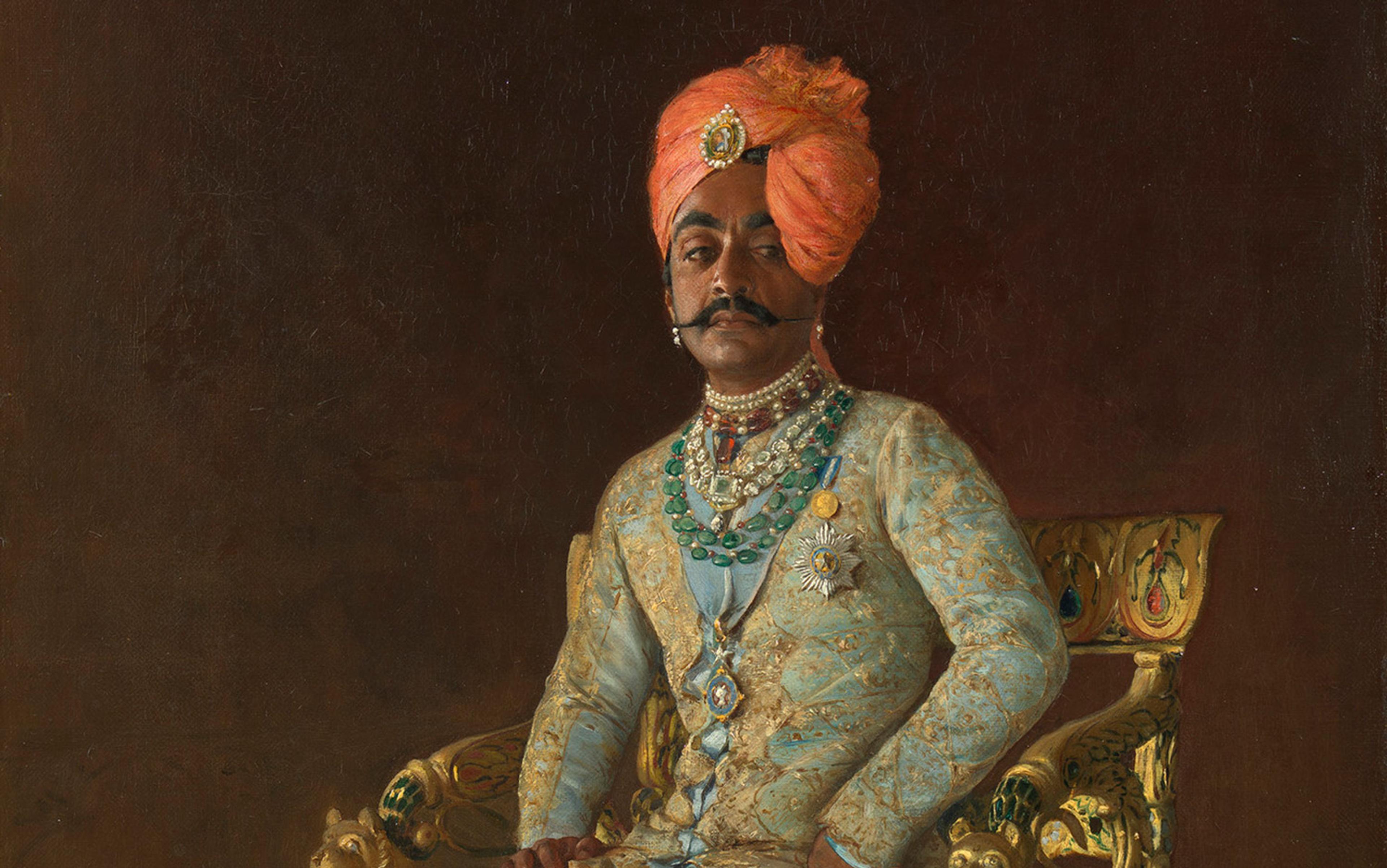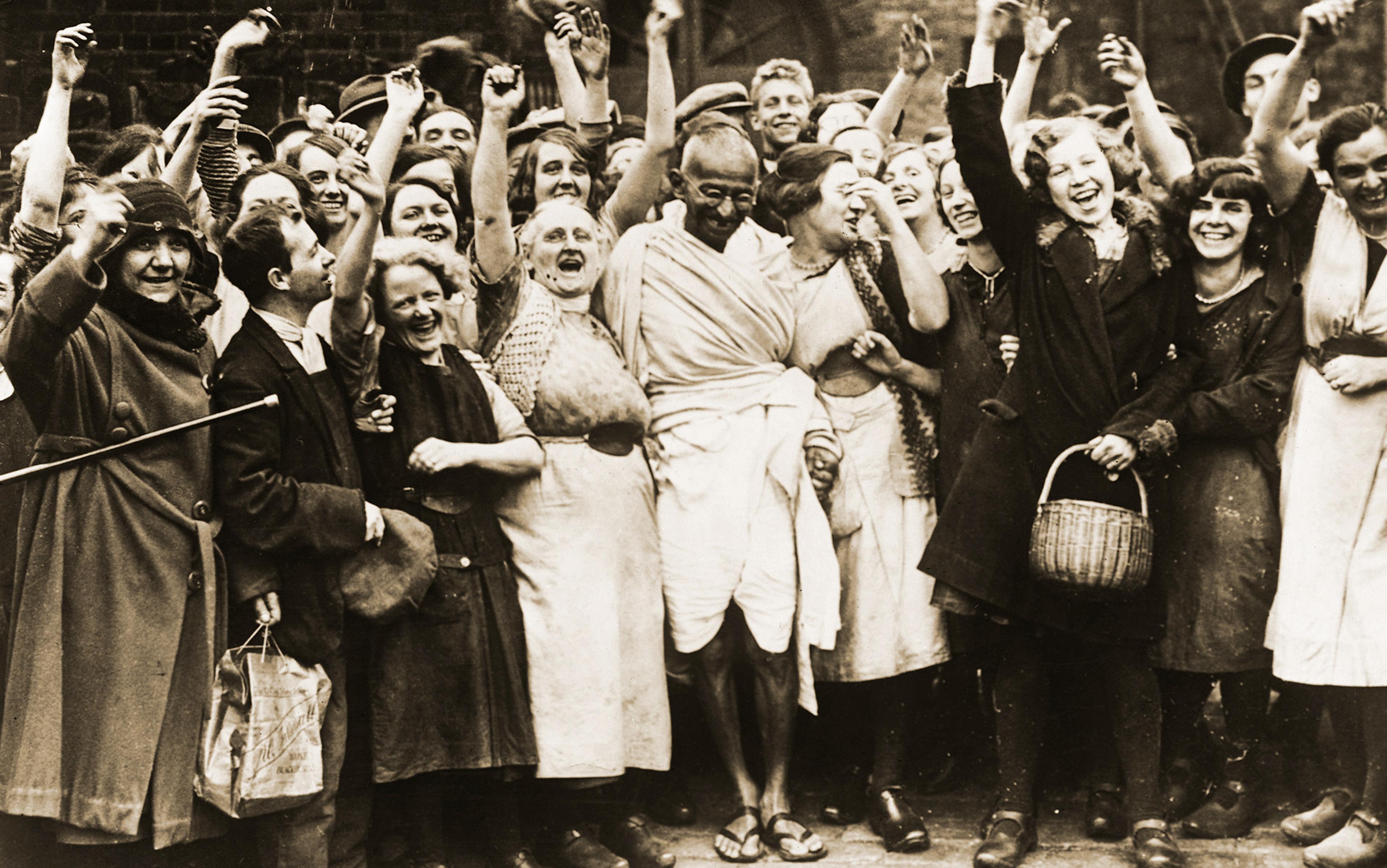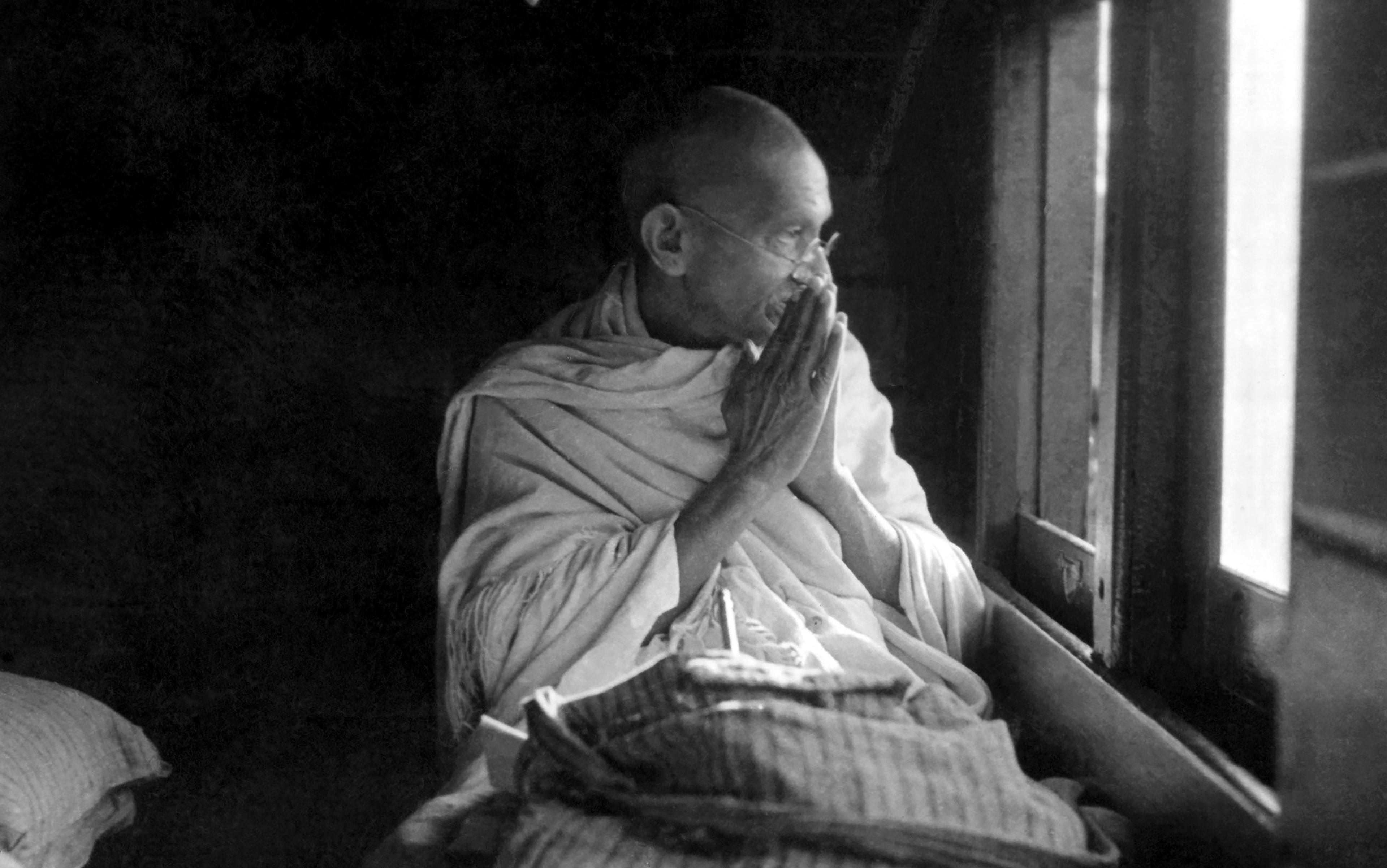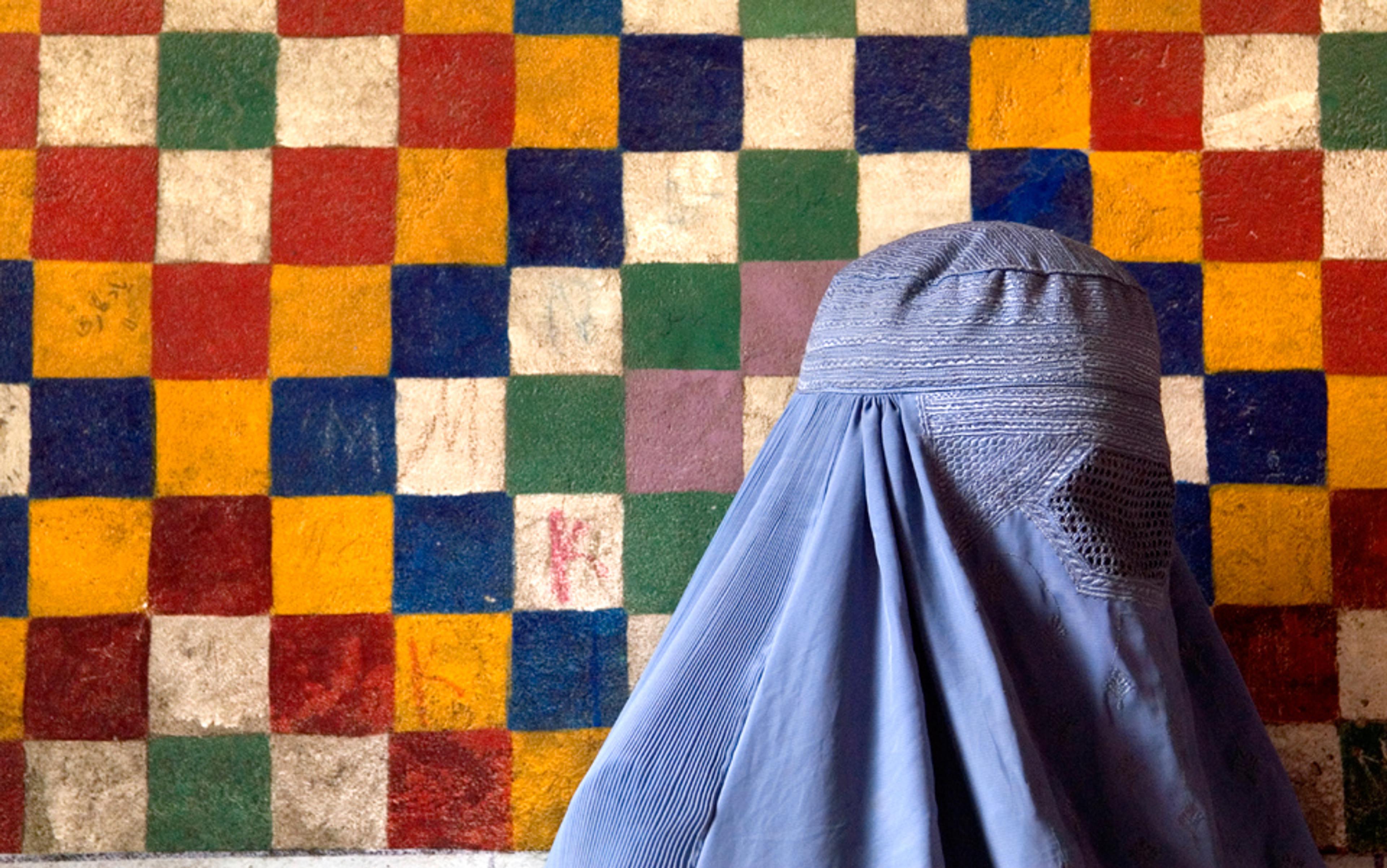In 1919, Sir Rabindranath Tagore wrote to Lord Chelmsford, the viceroy of India, to return the knighthood that the British Crown had bestowed upon him four years earlier. Tagore’s attempt to renounce his knighthood came in response to the Amritsar massacre, in which British imperial forces killed hundreds of peacefully demonstrating Indians. Tagore was especially protesting the way in which the British Indian press first suppressed news about the event, and then praised the actions of General Dyer, the commanding officer. ‘The time has come,’ Tagore wrote to Chelmsford, ‘when badges of honour make our shame glaring in the incongruous context of humiliation, and I for my part wish to stand, shorn of all special distinctions, by the side of those of my countrymen, who, for their so-called insignificance, are liable to suffer a degradation not fit for human beings.’
Chelmsford and officials in London refused to accept Tagore’s resignation of his title. They said that, as it was bestowed for services to literature, Tagore’s knighthood had nothing to do with politics, so he could not use it to make a political statement. Like it or not, he was stuck with it. Until his death in 1941, British officials continued to call him ‘Sir Rabindranath’. According to them, when it came to the politics of the Indian empire, a man known worldwide for his poetry was not even allowed to decide how he was to be addressed.
Though it didn’t rid him of his title, Tagore’s gesture caught the world’s notice. Officials refused his request in part because they feared its subversive political message, its undermining of British authority. But it was too late. Tagore’s letter to Chelmsford was public and reprinted in many Indian newspapers. In the letter, Tagore paired ‘badges of honour’ with shame, and elevated humility above special distinction. British-Indian honours and titles, Tagore implied, were worse than worthless because they highlighted the shame of India by patronising and coopting individual heroes. The fact that he remained ‘Sir Rabindranath’ in the eyes of the imperial state was an embarrassment. Indian nationalists later used the knighthood against Tagore, for they too agreed that British honour could not be separated from Indian shame.
At the beginning of the 19th century, the British honours system, a complex collection of orders of chivalry, titles, medals and other awards, recognised only a narrow elite. Beginning in the middle of the 19th century, however, it expanded. The British government created multiple new orders of chivalry, and repurposed existing awards to significantly augment the honours system. The last and largest new order was the Order of the British Empire, established in 1917 to recognise voluntary and military service during the First World War. Thanks to this expansion, by the middle of the 20th century, the British honours system had grown in Britain and around the world. It reached a much greater number of Britons and imperial subjects than it had a century before. It covered more of the empire, grew to include women as well as men, and adapted to reach the middle classes as well as to recognise more forms of service to the state. The empire was coming to a close, yet finding more ways than ever to honour a greater number of people.
Official standards, practices and rules governed the British honours system. The rules were designed to both recognise merit and acknowledge (and set) the social class of the recipient. For example, the Order of the British Empire had five ranks: Member, Officer, Commander, Knight/Dame, and Knight/Dame Grand Cross. Its architect, Frederick Ponsonby, explained the relationship between hierarchy and merit using a military example: ‘If an Admiral of the Fleet jumps overboard and saves the King’s life, he gets a Grand Cross; if a Midshipman rescued the Monarch from the deep, he receives the lowest class [rank].’ While it might, ‘perhaps be more logical’, to assign ranks according to merit, it was the nature of things that rank in honours corresponded to rank in society. In Ponsonby’s mind, the system was ordered, hierarchical and deferential, a gift from the top down to the people of the British empire. It was meant not to challenge but to fortify the fundamental social order within the empire.
Ponsonby hoped to increase the popularity of the system by including more people. But that is not all that happened: the more the system expanded, the more people cared about it and the ranks and recognition of service it represented. Not content to merely accept it, Brits and Australians, Indians and other former colonials debated the system and its meaning. This greater popular engagement and attention meant that, over the course of the 20th century, the British honours system grew more rather than less important to politics and society in Britain and the British empire. As decolonisation transformed the two traditional pillars of the system, deference and hierarchy, the honours system inevitably raised related questions.
The British government ‘bribes you into consenting to its will by awarding titles’, buying the loyalty of Indians
At the same time, many of the core institutions of modern British society, such as the monarchy, politicians, the civil service, the aristocracy, cultural elites and the military had a deep proprietary interest in the system already. Its expansion built on but also clashed with this tradition. Ponsonby hoped that the expanded system would lead more people to care about honours hierarchies. Elite critics of the Order of the British Empire attacked it for including people of the wrong type. For example, one writer scorned the ‘conferring of titles on authors of music-hall songs’ as ‘absurd’. Whatever their contributions to wartime morale, a knightly title did not fit their class and genre.
The British Crown used honours in the empire as a way of ranking and appealing to the local elites. The Crown particularly bestowed them in South Asia to the puppet rulers of the Indian princely states. The expansion of honours began to include more members of middle-class elites from the mid-19th century. In the first half of the 20th century, though, more and more Indian nationalists opted out of the honours system. It was a statement rejecting the British Indian government’s system of Indian titles, and the world of deference and loyalty to the empire that it represented.
In 1919, the same year in which Tagore tried to return his knighthood, M K Gandhi wrote that the first stage in instituting ‘non-cooperation’ with the British empire was the ‘giving up of titles and resignation of honorary posts’. The British government ‘bribes you into consenting to its will by awarding titles, medals and ribbons’, buying the loyalty of Indians with the offer of status, alongside the promise of commercial advantage if they accepted the British system. Gandhi was one of the 20th-century’s great masters of political symbolism. He understood that the dismantling of the British system of social distinction amounted to a step toward disengagement with imperial rule. The symbolism of British imperial honours mattered. It reinforced a deferential, hierarchical relationship that bought consent from Indians to the ‘will’ of the empire with a shallow currency that lacked true value.
Radical British critics had similar ideas about the dangers of conforming to an honours system that gave out status in return for loyalty. In her book Three Guineas (1938), Virginia Woolf used the growth of the honours system in the previous century as a way to invert gender stereotypes. Elite British men, she pointed out, loved uniforms and medals. They were the ‘powder and paint’ of the establishment. Men desired these external symbols in the same way that women were encouraged to pursue fashion. Woolf suggested that it was elite men – the patriarchy – more than women or anyone else who valued appearances over inner virtue and value. The honours system dramatised the most superficial forms of distinction. Women (and men) who wanted to build a new world of gender and power relations needed to look elsewhere for validation, status and respect.
However, for all that critics such as Tagore, Gandhi and Woolf sought to reject the honours system and what it represented, many others welcomed inclusion in it as a sign that their interests and services might gain admission into the elite. As Indian nationalists turned against the system, Indian princely families and their ministers redoubled their commitment to it. Many princes aggressively pursued more and better titles and honours, sometimes even violating written or unwritten rules. Throughout the 1940s, the last Nizam of Hyderabad, Mir Osman Ali Khan, one of the richest Indian client princes, lobbied the British for more honours for himself, his courtiers and his family. In spite of the fact that, according to the rules, lobbying for honours was not allowed, the British acquiesced because (as one of the Nizam’s ministers suggested) they were ‘not certain of the conditions that may prevail in post-war British India and therefore [were] desirous to have a contented and happy Hyderabad to meet those circumstances’.
The meaning of honours was at the forefront of a debate in 1946 between Jawaharlal Nehru and other nationalists on one side, and British officials on the other, about the fate of British honours and titles in an independent India. In 1922, upon its creation, the Irish Free State rejected the British honours system entirely, providing a precedent for India. Now, on the threshold of independence, British officials wanted to continue to use the honours system in India and Pakistan to foster and reinforce links between the new nations and the Empire. Nehru refused to entertain the British desire to keep honouring Indians. He pointed out that continuing to use British titles (and the hierarchy they implied) would undermine the sovereignty of an independent India.
Baffled by Nehru’s attitude, British officials decried it. Archibald Wavell, the penultimate British viceroy of India, wrote to his subordinates that he wanted to keep honours in place as long as possible, even after the transfer of power, because they were ‘still a useful tool in the hands of the administration’.
The new governments of India and Pakistan refused to allow Britain to honour their citizens
Wavell’s subordinates agreed. Sri Krishna Sinha, prime minister of the state of Bihar, objected to a potential honour for an Indian officer in charge of jails because the officer ‘is still a believer in ideals which have been abandoned long ago by the civilised world’. But the local British governor wrote to the viceroy that Sinha’s objections should be ignored. They were, he wrote, simply petty politics directed, from the British perspective, at ‘the most deserving cases on the list’. Sinha was a nationalist Congress politician, active in the independence struggle. His friends and allies had suffered in the very prison run by the nominee. Sinha knew the conditions under which they had been imprisoned. The British, for their part, were hoping that their own alliances with the jailers and policemen who had spent the past few decades abusing nationalists would persist, and give them some influence over an independent India. The British aimed the conferral of honours on the very Indians who had, often violently, suppressed Indian nationalism and independence.
In the end, the British were forced to accept that an independent India and Pakistan would no longer use British titles and honours. Indian honours to Indian princes who were holding out on joining the new republic and to British civil servants continued through to 1948, but otherwise the new governments of India and Pakistan refused to allow Britain to honour their citizens. The Orders of the Indian Empire and the Star of India are now, like the Irish Order of Saint Patrick, officially ‘dormant’.
Gandhi, Woolf, Tagore, Nehru and later critics in Britain and other parts of the empire agreed that honours constituted a shallow reward for a great cost of deference and loyalty to the Crown. But Britain herself saw no Gandhian revolution against the symbolism of honours. What was obvious and significant to Indian and Irish nationalists did not enter the mainstream of British political culture. The British public have been more attuned to and tolerant of the symbolism of the honours system. For groups on the margins of British society, inclusion in and recognition by the deferential hierarchy of honours mostly outweighed any costs. The ceremonial theatre of honours also had direct and lasting appeal: a letter from the prime minister, a public announcement in The Times, the medals and above all the chance to meet the Queen at an honours investiture.
What Britain saw instead of Gandhian revolution were individual moments of rebellion and scandal. One such scandal happened in 1965 when Harold Wilson’s Labour government made the four Beatles Members of the Order of the British Empire (MBEs). A dozen or so current holders of the Order returned their medals in protest. George Read, a coastguard decorated for bravery, wrote that he was ‘disgusted’ by the Beatles’ appointment, and was considering returning his medal. C V Hearn, a policeman who had got his MBE fighting bandits in Italy, told The Daily Telegraph that the Queen ‘was wrongly advised. I was told my award was for bravery, but there is nothing brave in yarping at a howling mob of teenagers while you have a million pounds in the bank.’
The more people who received honours, the more they cared about who else received them
Four years later, the Beatles’ John Lennon also returned his medal to protest ‘Britain’s involvement in the Nigeria-Biafra thing, against our support of America in Vietnam and against “Cold Turkey” slipping down the charts’. His renunciation was widely reported, but once again the government did not formally rescind the honour. When Lennon was killed in 1980, he was still officially an MBE, just as the other Beatles remained on the rolls of the Order, and Tagore remained Sir Rabindranath in the eyes of the state until his death.
Because of the British Crown’s refusal to accept returned medals as a renunciation of honours, ‘the gesture is meaningless’, wrote the honours expert Ivan de la Bere in response to the anti-Beatles protests in 1965. This echoed the British officials who, a few decades earlier, ignored Tagore’s request to return his knighthood, and then were puzzled by the new Indian government’s insistence that the British system be dropped. Tagore, Lennon and other anticolonial (and anti-Beatles) protestors understood state honours in a very different way. To them, these gestures were full of meaning. In fact, they were what gave the honours system an increasingly large part of its enduring significance in decolonising societies. This was true of India, where British titles retained a stigma. But it was also true in a different way in former settler colonies that continued to use aspects of the British system, such as Canada, Australia and New Zealand. In all of these nations, the legacy of the British system became entangled in debates about national identity, settler colonialism and their relationship to Britain. These publics were divided over the meaning and value of British honours and titles.
The more people who received honours, the more they cared about who else received them. They wanted to know how their honour, or the honour that their hero received, reflected their relationships to their neighbours, other people in the wider empire, and to national and imperial institutions. More honours more broadly conferred meant greater popular interest. This could mean embracing or rejecting the system. National liberation movements hoped to escape the deferential hierarchies of empire. But honours and hierarchy survived the end of the empire, and even proliferated in Britain and some former colonies. How and whether to decouple citizens from the British systems of hierarchy and loyalty proved to be a more difficult and more lasting problem than nationalists had hoped. The Indian Republic’s highest civilian honour, the Bharat Ratna, has been consistently controversial since its creation in 1954.
In 2004, the London-born British-Nigerian artist Yinka Shonibare accepted a MBE because ‘it was the last thing you would have expected of me’. His gesture was one of reinvention rather than refusal. As an international artist who engages with the history of empire and the ambiguities of postcolonial African cultural identity, Shonibare has found it more useful to accept the honour and use it to remind audiences of the imperial legacy than to renounce it. He and others have repurposed the symbolism of the Order for a postcolonial world. The empire is mostly gone, but the Order of the British Empire lives on in meaningful ways.






